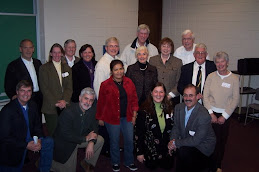 Teddy Kennedy’s funeral was different. It wasn’t your typical Roman Catholic celebrity liturgy. Ordinary priests had the starring roles of presider and homilist. There was an abundance of stories and much tenderness. The preacher spoke as one who had been a soul companion on Teddy’s final spiritual journey, rather than merely a clergyman. It was basically a “low Mass” with the ordinary parts spoken, not sung. Family was central despite the presence of exalted guests. The locale wasn’t a famous cathedral, but rather the working class church where Teddy had prayed most powerfully when his daughter was at death’s door, and where he himself encountered God during his final illness. There was open admission that the deceased had once led a wild life, which had been redeemed by God’s grace and the love of a good woman. There was talk of the spacious sea as well as the contours of politics and the urgency of social justice. The dominating figure was the widow, Vicki, who said not a word, but embraced and comforted all comers. Boston’s Cardinal stood on the sidelines until the very end, looking uneasy as if expecting a deluge of letters from his colleagues, many of whom would have denied Teddy Holy Communion if he had dared enter their precincts.
Teddy Kennedy’s funeral was different. It wasn’t your typical Roman Catholic celebrity liturgy. Ordinary priests had the starring roles of presider and homilist. There was an abundance of stories and much tenderness. The preacher spoke as one who had been a soul companion on Teddy’s final spiritual journey, rather than merely a clergyman. It was basically a “low Mass” with the ordinary parts spoken, not sung. Family was central despite the presence of exalted guests. The locale wasn’t a famous cathedral, but rather the working class church where Teddy had prayed most powerfully when his daughter was at death’s door, and where he himself encountered God during his final illness. There was open admission that the deceased had once led a wild life, which had been redeemed by God’s grace and the love of a good woman. There was talk of the spacious sea as well as the contours of politics and the urgency of social justice. The dominating figure was the widow, Vicki, who said not a word, but embraced and comforted all comers. Boston’s Cardinal stood on the sidelines until the very end, looking uneasy as if expecting a deluge of letters from his colleagues, many of whom would have denied Teddy Holy Communion if he had dared enter their precincts.What was going on? Perhaps the Catholicism on display was more Celtic than Roman. History reminds us that ancient Celtic Christianity is not the same as the Irish Catholicism created under Cardinal Paul Cullen in the homeland back in the mid-nineteenth century with its legalism and Jansenistic rigidity, which accompanied the immigrants to our shores during the devastating potato famine. Centuries ago, Celtic Catholicism had gone underground after the Roman ways were imposed at the Synod of Whitby in 664.
 The precipitating arguments at that time were about the date of Easter and tonsure and Baptism. But the issues beneath the surface focused on the fact that the leaders of the ancient Irish were not bishops and clerics, but abbots and abbesses in their monasteries, and holy men who lived in the forests. Moreover, the Irish form of Confession was ongoing spiritual direction rather than once-in-a-lifetime deathbed forgiveness. Also, women were powerful and honored church leaders. Rome was distant geographically and spiritually. When the Viking raiders arrived in the 9th century, many of the great abbeys were pillaged and destroyed. Still the faith persevered. And when Cromwell and his armies arrived in 1649, the ancient religion burrowed even deeper. Once again, in our own day, the pervasive sex abuse crisis is testing the faith of the Irish.
The precipitating arguments at that time were about the date of Easter and tonsure and Baptism. But the issues beneath the surface focused on the fact that the leaders of the ancient Irish were not bishops and clerics, but abbots and abbesses in their monasteries, and holy men who lived in the forests. Moreover, the Irish form of Confession was ongoing spiritual direction rather than once-in-a-lifetime deathbed forgiveness. Also, women were powerful and honored church leaders. Rome was distant geographically and spiritually. When the Viking raiders arrived in the 9th century, many of the great abbeys were pillaged and destroyed. Still the faith persevered. And when Cromwell and his armies arrived in 1649, the ancient religion burrowed even deeper. Once again, in our own day, the pervasive sex abuse crisis is testing the faith of the Irish.These ancient rivers run deep. They explain how the Catholic faith continues to hold our hearts despite clergy misconduct, hierarchical ineptitude, and the shortages of parish priests. They also explain how we can support Obama and Notre Dame and women religious and gays and other assorted outcasts. Teddy Kennedy’s funeral touched our hearts, and as he himself said, “The dream goes on.”
-- Baltasar

No comments:
Post a Comment